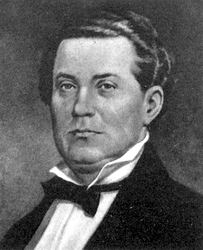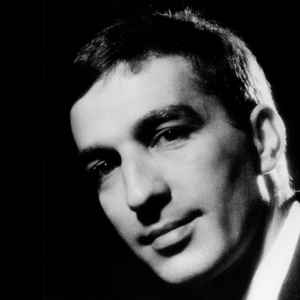
Vadim Salmanov |
Vadim Salmanov
V. Salmanov is an outstanding Soviet composer, the author of many symphonic, choral, chamber instrumental and vocal works. His oratorio-poemTwelve”(according to A. Blok) and the choral cycle“ Lebedushka ”, symphonies and quartets became genuine conquests of Soviet music.
Salmanov grew up in an intelligent family, where music was constantly played. His father, a metallurgical engineer by profession, was a good pianist and in his free time played works by a wide range of composers at home: from J. S. Bach to F. Liszt and F. Chopin, from M. Glinka to S. Rachmaninoff. Noticing his son’s abilities, his father began to introduce him to systematic music lessons from the age of 6, and the boy, not without resistance, obeyed his father’s will. Shortly before the young, promising musician entered the conservatory, his father died, and seventeen-year-old Vadim went to work at a factory, and later took up hydrogeology. But one day, having visited the concert of E. Gilels, excited by what he heard, he decided to devote himself to music. The meeting with the composer A. Gladkovsky strengthened this decision in him: in 1936, Salmanov entered the Leningrad Conservatory in the class of composition by M. Gnesin and instrumentation by M. Steinberg.
Salmanov was brought up in the traditions of the glorious St. Petersburg school (which left an imprint on his early compositions), but at the same time he was eagerly interested in contemporary music. From student works, 3 romances stand out at st. A, Blok – Salmanov’s favorite poet, Suite for String Orchestra and Little Symphony, in which the individual features of the composer’s style are already manifested.
With the beginning of the Great Patriotic War, Salmanov goes to the front. His creative activity resumed after the end of the war. Since 1951, pedagogical work at the Leningrad Conservatory begins and lasts until the last years of his life. Over a decade and a half, 3 string quartets and 2 trios were composed, the symphonic picture “Forest”, the vocal-symphonic poem “Zoya”, 2 symphonies (1952, 1959), the symphonic suite “Poetic Pictures” (based on the novels by G. X. Andersen), oratorio – the poem “The Twelve” (1957), the choral cycle “… But the Heart Beats” (on N. Hikmet’s verse), several notebooks of romances, etc. In the work of these years, the artist’s concept is refined – highly ethical and optimistic in its basis. Its essence lies in the affirmation of deep spiritual values that help a person overcome painful searches and experiences. At the same time, the individual features of the style are defined and honed: the traditional interpretation of the sonata allegro in the sonata-symphony cycle is abandoned and the cycle itself is rethought; the role of polyphonic, linearly independent movement of voices in the development of themes is enhanced (which leads the author in the future to the organic implementation of serial technique), etc. The Russian theme sounds brightly in Borodino’s First Symphony, epic in concept, and other compositions. The civic position is clearly manifested in the oratorio-poem “The Twelve”.
Since 1961, Salmanov has been composing a number of works using serial techniques. These are the quartets from the Third to the Sixth (1961-1971), the Third Symphony (1963), the Sonata for String Orchestra and Piano, etc. However, these compositions did not draw a sharp line in Salmanov’s creative evolution: he managed to use new methods of composer technique not as an end in itself, but organically including them in the system of means of their own musical language, subordinating them to the ideological, figurative and compositional design of their works. Such, for example, is the Third, dramatic symphony – the most complex symphonic work of the composer.
Since the mid 60s. a new streak begins, the peak period in the composer’s work. As never before, he works intensively and fruitfully, composing choirs, romances, chamber-instrumental music, the Fourth Symphony (1976). His individual style reaches the greatest integrity, summarizing the search for many previous years. The “Russian theme” reappears, but in a different capacity. The composer turns to folk poetic texts and, starting from them, creates his own melodies imbued with folk songs. Such are the choral concerts “Swan” (1967) and “Good fellow” (1972). The fourth symphony was the result in the development of Salmanov’s symphonic music; at the same time, this is his new creative takeoff. The three-part cycle is dominated by bright lyric-philosophical images.
In the mid 70s. Salmanov writes romances to the words of the talented Vologda poet N. Rubtsov. This is one of the last works of the composer, conveying both the desire of a person to communicate with nature, and philosophical reflections on life.
Salmanov’s works show us a great, serious and sincere artist who takes to heart and expresses various life conflicts in his music, always remaining true to a high moral and ethical position.
T. Ershova





